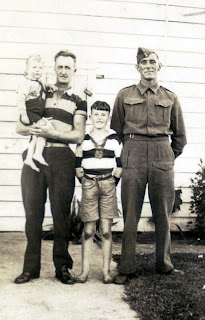I thought I would relate the stories behind the seven faces in the picture at the top of this blog. So, they are:
I can’t help but wonder what sights this woman’s eyes have seen. She must have lived through the atrocities of Pol Pot’s regime yet I can still see a twinkle in her eyes. She reminds me of the incredible resilience of the Khmer people and their inherent happiness in spite of Cambodia's
Still, our visit was a fascinating glimpse into how life used to be for these people, and how it still is for the poorer people in the surrounding area, who live next to their fields in very primitive mud dwellings. Our host family was very welcoming. There was the 55-year-old husband, shown here, his 45-year-old wife – who looked about 60, after having borne and raised 5 sons and 5 daughters – three of their daughters, one school-age son and one very cute grandson, of a daughter who had been married but didn’t like her husband so had divorced him and returned to her parents’ house.
A young Khmer boy
V is one of the children at Anjali House in Siem Reap, where I did two stints as a volunteer teacher, over Christmas 2009 and 2010. V was in my intermediate class, as was his older sister S. V was 9 when this photo was taken but looked much younger. Although he enjoys a filling lunch at Anjai each day and his family is supplied with a monthly sack of rice, the lack of nourishment earlier in his life has hindered his physical development. This is typical of many of the Anjali children.
He doesn’t lack energy, however, and during the breaks, races round the playground at breakneck speed just like all the other children. Here, his doe-like eyes, shaded by long thick lashes, are focused on a banner he was adding glitter to. The football season was about to start in Siem Reap and Anjali was fielding teams in the Globalteer Siem Reap Junior Soccer League, so the kids were making banners to support their schoolmates at the following Sunday’s game.
An old Chinese woman
For me, facial lines are a sign of a life well lived, so I imagine this old Chinese woman has lived a long and eventful life. This photo was taken in September 2008 in the magnificent Forbidden City in Beijing , China Beijing , I stopped over there for three nights on my way to Turkey Tiananmen Square a colourful flower display was still being dismantled.
I signed up for a one-day tour of the Forbidden City, Tiananmen Square and the Great Wall – by walking along the Wall I crossed off one of the long list of things on my Bucket List! The Forbidden City had been closed to Chinese nationals while the Games had been on, so our tour started early to try to avoid the large numbers of Chinese visitors who later thronged the famous tourist attraction. It was wonderful to see how they appreciated, valued and admired this national treasure as much as I did. The old woman was one of these, wandering around the City buildings with another old woman.
A young Khmer girl
L is another of the children at Anjali House, in Siem Reap , Cambodia
The children of Anjali come from poverty-stricken, underprivileged backgrounds. If they weren’t at Anjali, they would almost certainly be out on the streets trying to sell souvenirs, or begging, or collecting rubbish to sell to help support their families. Some have only one parent, others have parents who are HIV-positive, still others have been psychologically mistreated by the people around them. I don’t know L’s exact background but I do know she is a beautiful child who deserves a better future.

A Turkish woman in a head scarf
Iyi Bayramlar! That’s ‘Happy-end-of-Ramadam-day’ in Turkish and this photo was taken on that day, 30 September 2008. I was touring Turkey Cappadocia , the land of deep underground cities, and houses and churches built in strange geological formations.
On this day we had climbed up the rock fortress above the town of Üçhisar
A monk at Wat Bo
Wat means pagoda in Khmer and Wat Bo is the pagoda just down the road from the Globalteer guesthouse in Siem Reap. Marianne and I were walking into town one afternoon and stopped to explore the wat and its grounds, which are filled with the tombs of deceased monks and the houses of the living. Leaving our shoes at the door, we entered the gloomy interior of the pagoda to view the very old paintings on the interior walls and ceiling. These show scenes of various events in the life of Buddha and, despite their great age, are still bright and vibrant.
This young monk was chatting to another visitor when we arrived, then came to talk to us when the other visitor left. Keen to improve his English, he was happy to answer our questions about the pagoda and his life as a monk. He was also happy to pose for my photo before we left. I love his beautiful smile.
























